Overline
Image with text overlay
Give customers details about the banner image(s) or content on the template.
for test
Explore our TrueLife Engine, smart tuning effects that bring to life each and every shot
Explore our TrueLife Engine, smart tuning effects that bring to life each and every shot
for test
Pair text with an image to focus on your chosen product, collection, or blog post. Add details on availability, style, or even provide a review.

Lorem ipsum is placeholder text commonly used in the graphic, print, and publishing industries for previewing layouts and visual mockups.

Lorem ipsum is placeholder text commonly used in the graphic, print, and publishing industries for previewing layouts and visual mockups.
for test for test
IT Home April 3 news, according to Reddit user natty_overlord's survey data, there have been 120 reports of AMD Ryzen 9000 series processor failures globally, of which 108 involve the 9800X3D model. Additionally, 82% of the failures occurred on ASRock motherboards, significantly higher than ASUS (13%), MSI (4%), and GIGABYTE (1%).
In a statement provided to PCGamer, an AMD representative responded on April 2, attributing some of the failures to memory compatibility issues.

The media reported that a limited number of users reported issues with ASRock AM5 motherboards failing to complete POST (Power-On Self-Test). After a joint investigation, AMD and ASRock identified memory compatibility issues in early BIOS versions, which have been corrected in the latest BIOS.
However, regarding the widely circulated rumors of 9800X3D 'burnout', neither AMD nor ASRock have provided an explanation. Fortunately, users currently owning 9800X3D, 9900X3D, or 9950X3D processors are still within the warranty period. IT Home will follow up on further developments.
ITHome reported on April 3rd that for many players, the slow loading of the eShop on the original Nintendo Switch has always been a headache. However, this situation is about to change. According to Takuhiro Dohta, Senior Director of Entertainment Planning and Development at Nintendo, in a "Developer Q&A" interview, the upcoming Switch 2 will feature a more performance-enhanced eShop channel, capable of running smoothly even when displaying a large number of games.

Dohta stated that the speed improvement of the Switch 2's eShop is mainly due to the significant enhancement of the system's performance. The software of the original Switch, after years of operation, has increasingly shown its inadequacy both in the menu interface and during gameplay. He emphasized: "We believe that finding the game you want to play is also part of the game system experience."
Additionally, the eShop will introduce a new feature called "Games Recommended for You." According to Kouichi Kawamoto, Producer at Entertainment Planning and Development, this feature allows players to quickly browse through screenshots of various games and watch introductory videos without having to search around in the store, greatly improving the efficiency of players finding their favorite games.

If Nintendo can make the eShop more intuitive and user-friendly, it will hold a favorable position in the next-generation competition of digital gaming experiences. Coupled with the virtual game card feature that allows players to share digital games locally with others for a limited time, the overall experience will be even better. As for whether the price of some digital first-party games at $79.99 (ITHome note: currently equivalent to about 584 RMB) is worth it, that will be for players to decide.
Ya sea que necesite actualizar manualmente el software de su REDMAGIC o actualizar su dispositivo con la ROM global, siga las instrucciones a continuación.
NOTAS:
 We really took a pounding.
We really took a pounding.
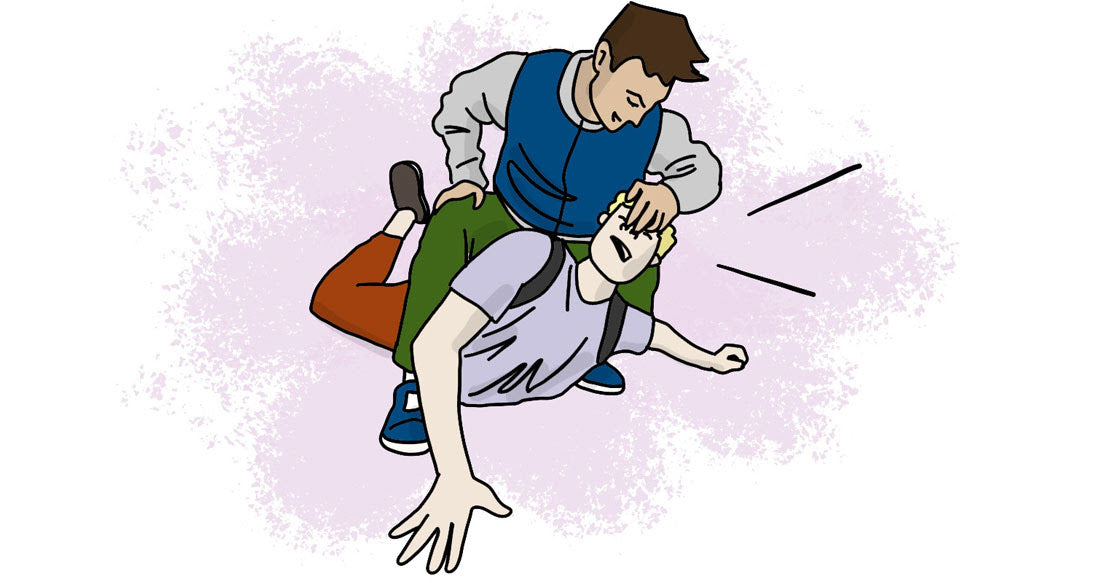
#1: Cael's High School Beating
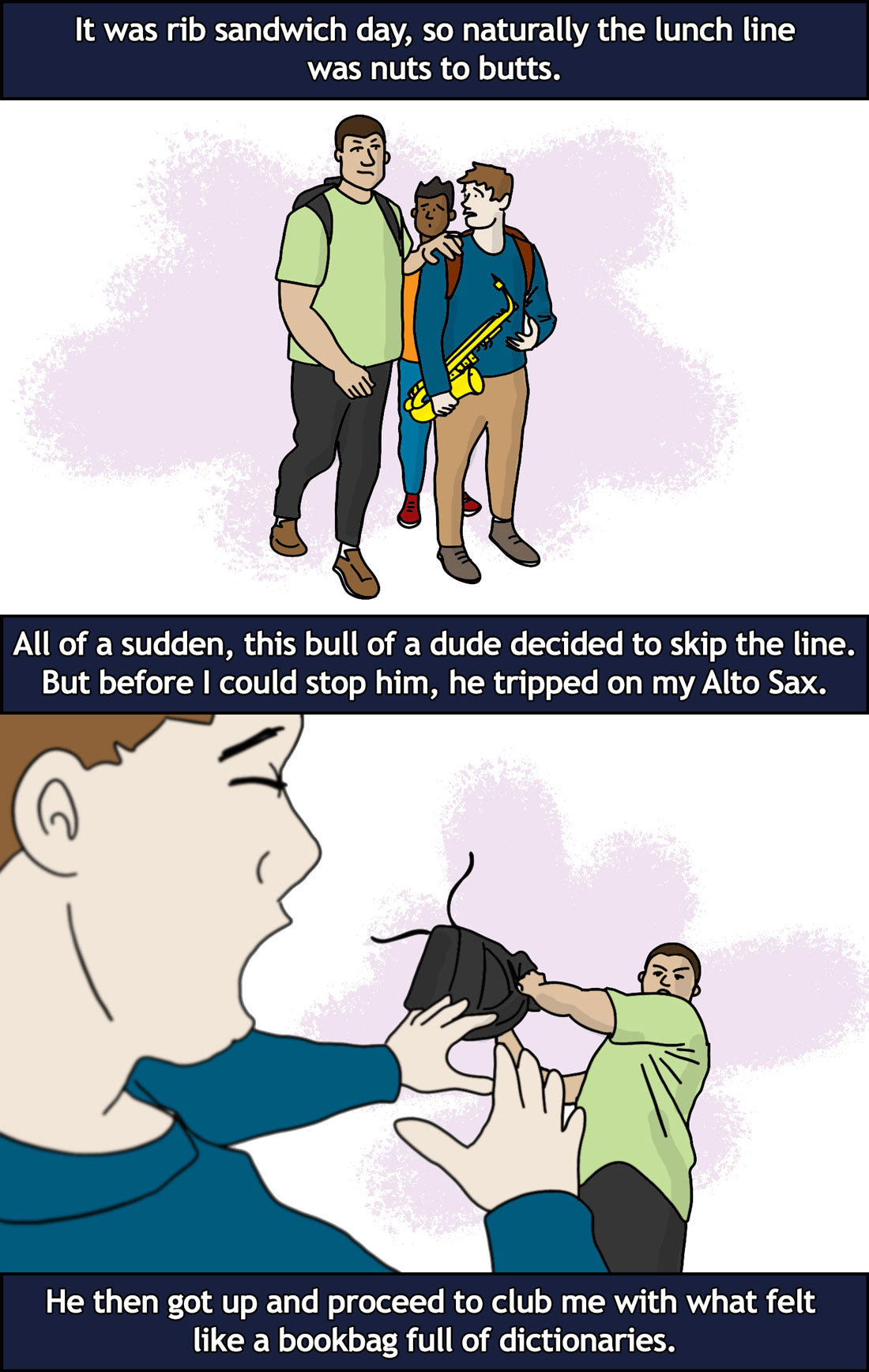
#2: Sam's High School Beating
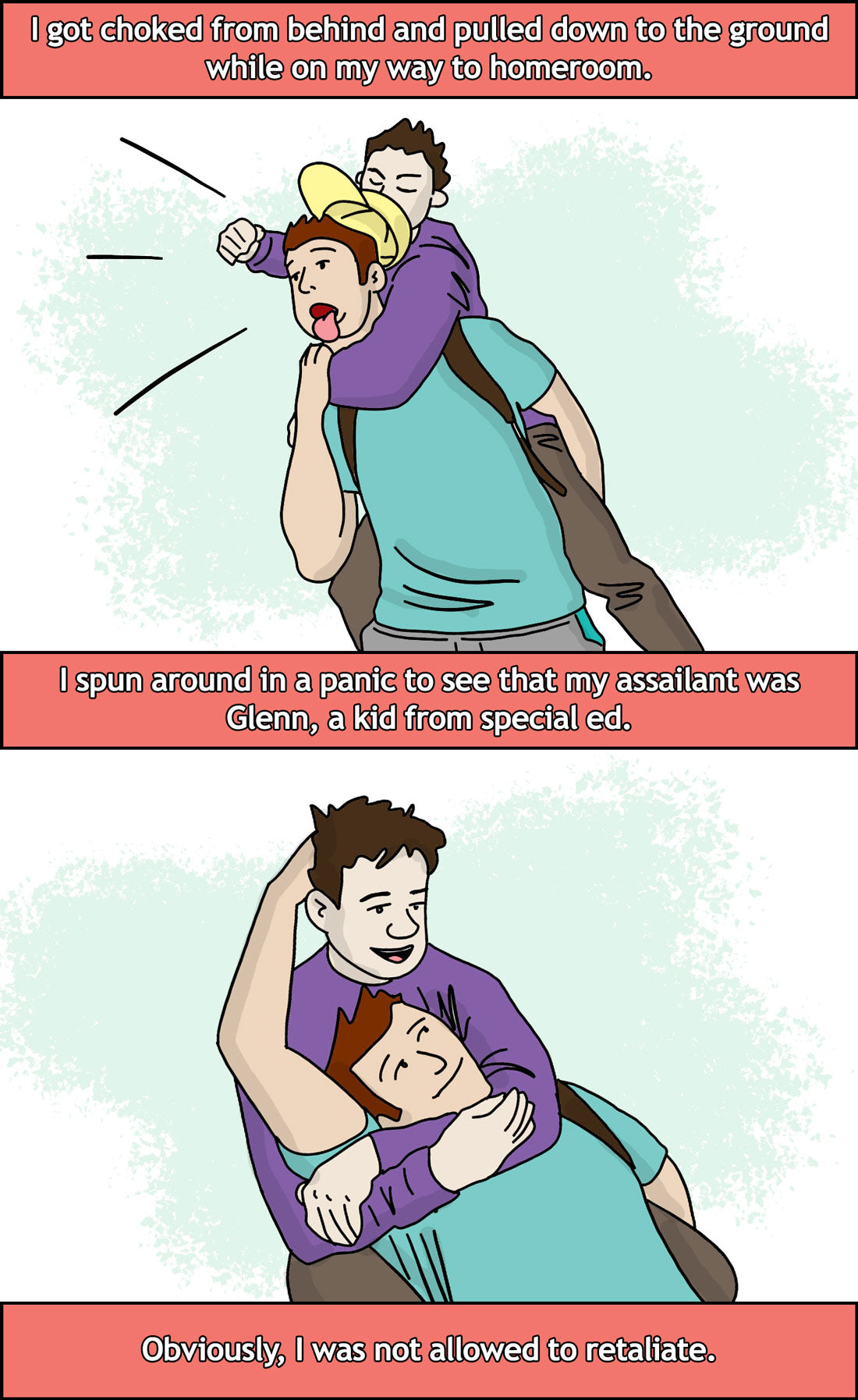
#3: Karl's High School Beating
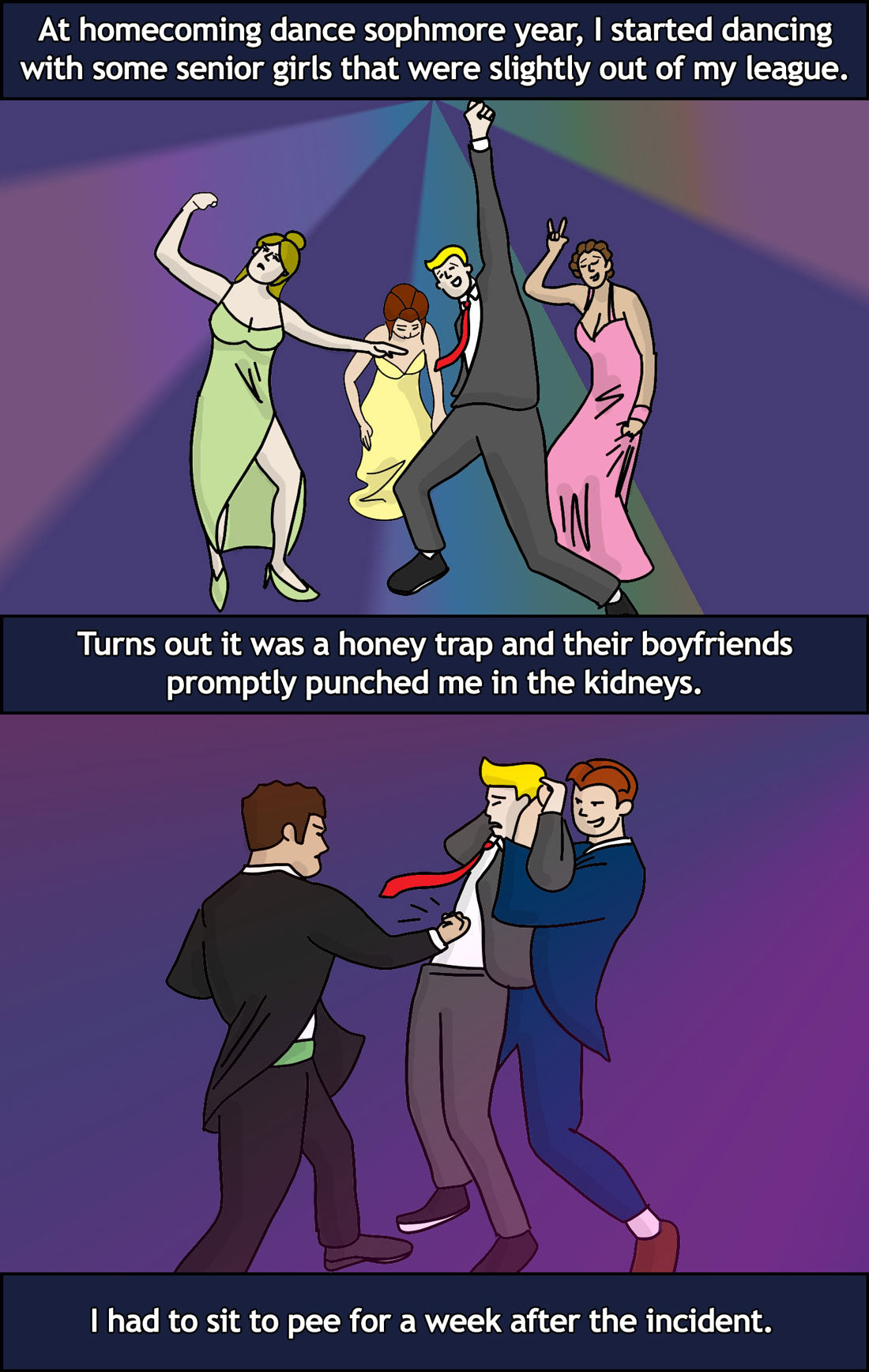
Imagine, for a second, you relied on a standard office printer to print out weekly reports. Nowadays, even your run-of-the-mill printer has countless fancy features. And yet, come Friday, you shuffle over to the printer and push, by sheer force of habit, the same buttons in the same sequence to get the same result. Naturally, your report is never formatted exactly how you wanted (perhaps the margins are too narrow or the images are too dark), so you just accept the result because it would be too time-consuming to figure out how to get the thing to do exactly what you want it to. Nobody likes doing this type of tedious work, which is why it usually got passed off on me back when I was an intern: “Hey Hector, can you print this out for me, same as last week but just skip the images?” I couldn’t delegate this to somebody else, because the only thing lower in the hierarchy than me was, well, the printer. 🖨
But imagine how enjoyable my internship would’ve been if I could’ve talked to my printer. Nowadays, some smart printers can already handle basic voice commands, eliminating some of the inefficient button pushing. But what if these smart printers could take it a step further and carry on a context-sensitive conversation that accounts for changing needs? It might, for instance, make helpful suggestions like, “It looks like you’re just printing a quick draft, so should I make it black and white to save some ink?” This would make it more than just a useful tool, but an assistive agent. 💥
alkfjalk akfji on your home is good woud
akfdla;lfkl
alkjfa;lsdfk
afjalsjfl;
When I moved from Mexico to the US, I had difficulties expressing myself in English. And because personal expression is so important to me, I had a lot of frustrating experiences where I longed to use the Spanish words I felt more comfortable with. But I also knew that I wanted to make a life here; I knew that this language was to be my new medium of communication. So I was patient with myself and, thankfully, so too were my new friends and colleagues. 🇲🇽🇺🇸
We’ll all have to be patient with this new conversational technology. We still have a lot of work to do to improve natural language understanding and speech technology. In the meantime, you’re bound to have a few frustrating interactions where, like me in my first years here in the US, you long for your accustomed medium. But deep down, you know the world is changing and many of these interaction models are becoming obsolete. 🌎

We should just be grateful that we don’t need to learn a new language to interact with this new technology. We just need to get used to speaking it with somebody — or better yet, something — that is still learning to talk. So be patient, be open-minded, and just be yourself. Only then will the future of technology finally take a human shape.This might be the end of the article, but hopefully the beginning of a longer conversation. I’m eager to expand my thinking in this space and would love to hear your perspectives. 🎆
Fore more about this conversation, here’s my latest talk @ CX SF 2019 🕺🏽and podcast at Forrester What It Means series (The Ambiguity-Laden March Toward People-Centric Design). 👋🏽
Illustrations by Helen Slavutsky
When I moved from Mexico to the US, I had difficulties expressing myself in English. And because personal expression is so important to me, I had a lot of frustrating experiences where I longed to use the Spanish words I felt more comfortable with. But I also knew that I wanted to make a life here; I knew that this language was to be my new medium of communication. So I was patient with myself and, thankfully, so too were my new friends and colleagues. 🇲🇽🇺🇸
We’ll all have to be patient with this new conversational technology. We still have a lot of work to do to improve natural language understanding and speech technology. In the meantime, you’re bound to have a few frustrating interactions where, like me in my first years here in the US, you long for your accustomed medium. But deep down, you know the world is changing and many of these interaction models are becoming obsolete. 🌎

We should just be grateful that we don’t need to learn a new language to interact with this new technology. We just need to get used to speaking it with somebody — or better yet, something — that is still learning to talk. So be patient, be open-minded, and just be yourself. Only then will the future of technology finally take a human shape.This might be the end of the article, but hopefully the beginning of a longer conversation. I’m eager to expand my thinking in this space and would love to hear your perspectives. 🎆
Fore more about this conversation, here’s my latest talk @ CX SF 2019 🕺🏽and podcast at Forrester What It Means series (The Ambiguity-Laden March Toward People-Centric Design). 👋🏽
Illustrations by Helen Slavutsky
When I moved from Mexico to the US, I had difficulties expressing myself in English. And because personal expression is so important to me, I had a lot of frustrating experiences where I longed to use the Spanish words I felt more comfortable with. But I also knew that I wanted to make a life here; I knew that this language was to be my new medium of communication. So I was patient with myself and, thankfully, so too were my new friends and colleagues. 🇲🇽🇺🇸
We’ll all have to be patient with this new conversational technology. We still have a lot of work to do to improve natural language understanding and speech technology. In the meantime, you’re bound to have a few frustrating interactions where, like me in my first years here in the US, you long for your accustomed medium. But deep down, you know the world is changing and many of these interaction models are becoming obsolete. 🌎

We should just be grateful that we don’t need to learn a new language to interact with this new technology. We just need to get used to speaking it with somebody — or better yet, something — that is still learning to talk. So be patient, be open-minded, and just be yourself. Only then will the future of technology finally take a human shape.This might be the end of the article, but hopefully the beginning of a longer conversation. I’m eager to expand my thinking in this space and would love to hear your perspectives. 🎆
Fore more about this conversation, here’s my latest talk @ CX SF 2019 🕺🏽and podcast at Forrester What It Means series (The Ambiguity-Laden March Toward People-Centric Design). 👋🏽
Illustrations by Helen Slavutsky
When I moved from Mexico to the US, I had difficulties expressing myself in English. And because personal expression is so important to me, I had a lot of frustrating experiences where I longed to use the Spanish words I felt more comfortable with. But I also knew that I wanted to make a life here; I knew that this language was to be my new medium of communication. So I was patient with myself and, thankfully, so too were my new friends and colleagues. 🇲🇽🇺🇸
We’ll all have to be patient with this new conversational technology. We still have a lot of work to do to improve natural language understanding and speech technology. In the meantime, you’re bound to have a few frustrating interactions where, like me in my first years here in the US, you long for your accustomed medium. But deep down, you know the world is changing and many of these interaction models are becoming obsolete. 🌎

We should just be grateful that we don’t need to learn a new language to interact with this new technology. We just need to get used to speaking it with somebody — or better yet, something — that is still learning to talk. So be patient, be open-minded, and just be yourself. Only then will the future of technology finally take a human shape.This might be the end of the article, but hopefully the beginning of a longer conversation. I’m eager to expand my thinking in this space and would love to hear your perspectives. 🎆
Fore more about this conversation, here’s my latest talk @ CX SF 2019 🕺🏽and podcast at Forrester What It Means series (The Ambiguity-Laden March Toward People-Centric Design). 👋🏽
Illustrations by Helen Slavutsky
When I moved from Mexico to the US, I had difficulties expressing myself in English. And because personal expression is so important to me, I had a lot of frustrating experiences where I longed to use the Spanish words I felt more comfortable with. But I also knew that I wanted to make a life here; I knew that this language was to be my new medium of communication. So I was patient with myself and, thankfully, so too were my new friends and colleagues. 🇲🇽🇺🇸
We’ll all have to be patient with this new conversational technology. We still have a lot of work to do to improve natural language understanding and speech technology. In the meantime, you’re bound to have a few frustrating interactions where, like me in my first years here in the US, you long for your accustomed medium. But deep down, you know the world is changing and many of these interaction models are becoming obsolete. 🌎

We should just be grateful that we don’t need to learn a new language to interact with this new technology. We just need to get used to speaking it with somebody — or better yet, something — that is still learning to talk. So be patient, be open-minded, and just be yourself. Only then will the future of technology finally take a human shape.This might be the end of the article, but hopefully the beginning of a longer conversation. I’m eager to expand my thinking in this space and would love to hear your perspectives. 🎆
Fore more about this conversation, here’s my latest talk @ CX SF 2019 🕺🏽and podcast at Forrester What It Means series (The Ambiguity-Laden March Toward People-Centric Design). 👋🏽
Illustrations by Helen Slavutsky
When I moved from Mexico to the US, I had difficulties expressing myself in English. And because personal expression is so important to me, I had a lot of frustrating experiences where I longed to use the Spanish words I felt more comfortable with. But I also knew that I wanted to make a life here; I knew that this language was to be my new medium of communication. So I was patient with myself and, thankfully, so too were my new friends and colleagues. 🇲🇽🇺🇸
We’ll all have to be patient with this new conversational technology. We still have a lot of work to do to improve natural language understanding and speech technology. In the meantime, you’re bound to have a few frustrating interactions where, like me in my first years here in the US, you long for your accustomed medium. But deep down, you know the world is changing and many of these interaction models are becoming obsolete. 🌎

We should just be grateful that we don’t need to learn a new language to interact with this new technology. We just need to get used to speaking it with somebody — or better yet, something — that is still learning to talk. So be patient, be open-minded, and just be yourself. Only then will the future of technology finally take a human shape.This might be the end of the article, but hopefully the beginning of a longer conversation. I’m eager to expand my thinking in this space and would love to hear your perspectives. 🎆
Fore more about this conversation, here’s my latest talk @ CX SF 2019 🕺🏽and podcast at Forrester What It Means series (The Ambiguity-Laden March Toward People-Centric Design). 👋🏽
Illustrations by Helen Slavutsky
When I moved from Mexico to the US, I had difficulties expressing myself in English. And because personal expression is so important to me, I had a lot of frustrating experiences where I longed to use the Spanish words I felt more comfortable with. But I also knew that I wanted to make a life here; I knew that this language was to be my new medium of communication. So I was patient with myself and, thankfully, so too were my new friends and colleagues. 🇲🇽🇺🇸
We’ll all have to be patient with this new conversational technology. We still have a lot of work to do to improve natural language understanding and speech technology. In the meantime, you’re bound to have a few frustrating interactions where, like me in my first years here in the US, you long for your accustomed medium. But deep down, you know the world is changing and many of these interaction models are becoming obsolete. 🌎

We should just be grateful that we don’t need to learn a new language to interact with this new technology. We just need to get used to speaking it with somebody — or better yet, something — that is still learning to talk. So be patient, be open-minded, and just be yourself. Only then will the future of technology finally take a human shape.This might be the end of the article, but hopefully the beginning of a longer conversation. I’m eager to expand my thinking in this space and would love to hear your perspectives. 🎆
Fore more about this conversation, here’s my latest talk @ CX SF 2019 🕺🏽and podcast at Forrester What It Means series (The Ambiguity-Laden March Toward People-Centric Design). 👋🏽
Illustrations by Helen Slavutsky
When I moved from Mexico to the US, I had difficulties expressing myself in English. And because personal expression is so important to me, I had a lot of frustrating experiences where I longed to use the Spanish words I felt more comfortable with. But I also knew that I wanted to make a life here; I knew that this language was to be my new medium of communication. So I was patient with myself and, thankfully, so too were my new friends and colleagues. 🇲🇽🇺🇸
We’ll all have to be patient with this new conversational technology. We still have a lot of work to do to improve natural language understanding and speech technology. In the meantime, you’re bound to have a few frustrating interactions where, like me in my first years here in the US, you long for your accustomed medium. But deep down, you know the world is changing and many of these interaction models are becoming obsolete. 🌎

We should just be grateful that we don’t need to learn a new language to interact with this new technology. We just need to get used to speaking it with somebody — or better yet, something — that is still learning to talk. So be patient, be open-minded, and just be yourself. Only then will the future of technology finally take a human shape.This might be the end of the article, but hopefully the beginning of a longer conversation. I’m eager to expand my thinking in this space and would love to hear your perspectives. 🎆
Fore more about this conversation, here’s my latest talk @ CX SF 2019 🕺🏽and podcast at Forrester What It Means series (The Ambiguity-Laden March Toward People-Centric Design). 👋🏽
Illustrations by Helen Slavutsky
When I moved from Mexico to the US, I had difficulties expressing myself in English. And because personal expression is so important to me, I had a lot of frustrating experiences where I longed to use the Spanish words I felt more comfortable with. But I also knew that I wanted to make a life here; I knew that this language was to be my new medium of communication. So I was patient with myself and, thankfully, so too were my new friends and colleagues. 🇲🇽🇺🇸
We’ll all have to be patient with this new conversational technology. We still have a lot of work to do to improve natural language understanding and speech technology. In the meantime, you’re bound to have a few frustrating interactions where, like me in my first years here in the US, you long for your accustomed medium. But deep down, you know the world is changing and many of these interaction models are becoming obsolete. 🌎

We should just be grateful that we don’t need to learn a new language to interact with this new technology. We just need to get used to speaking it with somebody — or better yet, something — that is still learning to talk. So be patient, be open-minded, and just be yourself. Only then will the future of technology finally take a human shape.This might be the end of the article, but hopefully the beginning of a longer conversation. I’m eager to expand my thinking in this space and would love to hear your perspectives. 🎆
Fore more about this conversation, here’s my latest talk @ CX SF 2019 🕺🏽and podcast at Forrester What It Means series (The Ambiguity-Laden March Toward People-Centric Design). 👋🏽
Illustrations by Helen Slavutsky
When I moved from Mexico to the US, I had difficulties expressing myself in English. And because personal expression is so important to me, I had a lot of frustrating experiences where I longed to use the Spanish words I felt more comfortable with. But I also knew that I wanted to make a life here; I knew that this language was to be my new medium of communication. So I was patient with myself and, thankfully, so too were my new friends and colleagues. 🇲🇽🇺🇸
We’ll all have to be patient with this new conversational technology. We still have a lot of work to do to improve natural language understanding and speech technology. In the meantime, you’re bound to have a few frustrating interactions where, like me in my first years here in the US, you long for your accustomed medium. But deep down, you know the world is changing and many of these interaction models are becoming obsolete. 🌎

We should just be grateful that we don’t need to learn a new language to interact with this new technology. We just need to get used to speaking it with somebody — or better yet, something — that is still learning to talk. So be patient, be open-minded, and just be yourself. Only then will the future of technology finally take a human shape.This might be the end of the article, but hopefully the beginning of a longer conversation. I’m eager to expand my thinking in this space and would love to hear your perspectives. 🎆
Fore more about this conversation, here’s my latest talk @ CX SF 2019 🕺🏽and podcast at Forrester What It Means series (The Ambiguity-Laden March Toward People-Centric Design). 👋🏽
Illustrations by Helen Slavutsky
When I moved from Mexico to the US, I had difficulties expressing myself in English. And because personal expression is so important to me, I had a lot of frustrating experiences where I longed to use the Spanish words I felt more comfortable with. But I also knew that I wanted to make a life here; I knew that this language was to be my new medium of communication. So I was patient with myself and, thankfully, so too were my new friends and colleagues. 🇲🇽🇺🇸
We’ll all have to be patient with this new conversational technology. We still have a lot of work to do to improve natural language understanding and speech technology. In the meantime, you’re bound to have a few frustrating interactions where, like me in my first years here in the US, you long for your accustomed medium. But deep down, you know the world is changing and many of these interaction models are becoming obsolete. 🌎

We should just be grateful that we don’t need to learn a new language to interact with this new technology. We just need to get used to speaking it with somebody — or better yet, something — that is still learning to talk. So be patient, be open-minded, and just be yourself. Only then will the future of technology finally take a human shape.This might be the end of the article, but hopefully the beginning of a longer conversation. I’m eager to expand my thinking in this space and would love to hear your perspectives. 🎆
Fore more about this conversation, here’s my latest talk @ CX SF 2019 🕺🏽and podcast at Forrester What It Means series (The Ambiguity-Laden March Toward People-Centric Design). 👋🏽
Illustrations by Helen Slavutsky
When I moved from Mexico to the US, I had difficulties expressing myself in English. And because personal expression is so important to me, I had a lot of frustrating experiences where I longed to use the Spanish words I felt more comfortable with. But I also knew that I wanted to make a life here; I knew that this language was to be my new medium of communication. So I was patient with myself and, thankfully, so too were my new friends and colleagues. 🇲🇽🇺🇸
We’ll all have to be patient with this new conversational technology. We still have a lot of work to do to improve natural language understanding and speech technology. In the meantime, you’re bound to have a few frustrating interactions where, like me in my first years here in the US, you long for your accustomed medium. But deep down, you know the world is changing and many of these interaction models are becoming obsolete. 🌎

We should just be grateful that we don’t need to learn a new language to interact with this new technology. We just need to get used to speaking it with somebody — or better yet, something — that is still learning to talk. So be patient, be open-minded, and just be yourself. Only then will the future of technology finally take a human shape.This might be the end of the article, but hopefully the beginning of a longer conversation. I’m eager to expand my thinking in this space and would love to hear your perspectives. 🎆
Fore more about this conversation, here’s my latest talk @ CX SF 2019 🕺🏽and podcast at Forrester What It Means series (The Ambiguity-Laden March Toward People-Centric Design). 👋🏽
Illustrations by Helen Slavutsky
Xpeng provides full-service with national coverage, for any incident along the road. Our customer service hotline at 41 45 97 97 is staffed 24/7.
If you require any assistance on the road, Xpeng Assistance is ready to respond 24/7. We provide help-on-phone and can dispatch support to your location at any time to ensure you and your vehicle are taken well care of.
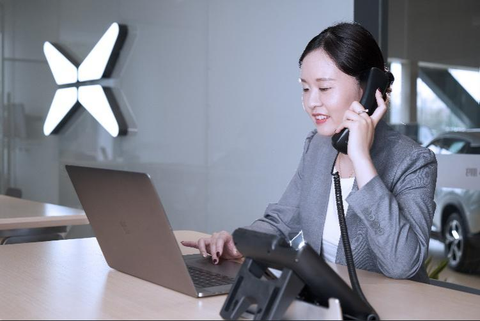
When I moved from Mexico to the US, I had difficulties expressing myself in English. And because personal expression is so important to me, I had a lot of frustrating experiences where I longed to use the Spanish words I felt more comfortable with. But I also knew that I wanted to make a life here; I knew that this language was to be my new medium of communication. So I was patient with myself and, thankfully, so too were my new friends and colleagues. 🇲🇽🇺🇸
We’ll all have to be patient with this new conversational technology. We still have a lot of work to do to improve natural language understanding and speech technology. In the meantime, you’re bound to have a few frustrating interactions where, like me in my first years here in the US, you long for your accustomed medium. But deep down, you know the world is changing and many of these interaction models are becoming obsolete. 🌎

We should just be grateful that we don’t need to learn a new language to interact with this new technology. We just need to get used to speaking it with somebody — or better yet, something — that is still learning to talk. So be patient, be open-minded, and just be yourself. Only then will the future of technology finally take a human shape.This might be the end of the article, but hopefully the beginning of a longer conversation. I’m eager to expand my thinking in this space and would love to hear your perspectives. 🎆
Fore more about this conversation, here’s my latest talk @ CX SF 2019 🕺🏽and podcast at Forrester What It Means series (The Ambiguity-Laden March Toward People-Centric Design). 👋🏽
Illustrations by Helen Slavutsky
do yourself , let's go, try your best to do!
blog-dev2 is different blog type!

akjf ljai is shome wo me you jis
blog-dev2 is different blog type!
“We challenge our students to think big — we want them to make a positive difference in the world,” says Kinley. “It’s our job to equip them with the necessary knowledge and skills they’ll need to thrive. We know we can do that by fostering independent and self-directed learners, and iPad is a key tool in this mission.”
At Bromley School, every teacher and middle school student has their own iPad. There’s an Apple TV in every classroom, and a fleet of Macs for coding. Since introducing iPad, Bromley students are setting the bar for what’s possible when you inspire the minds of young learners. They’re winning regional digital creativity competitions, taking an active role in their learning successes, pitching their ideas to local community groups and investors, and sharing their experience with other schools.
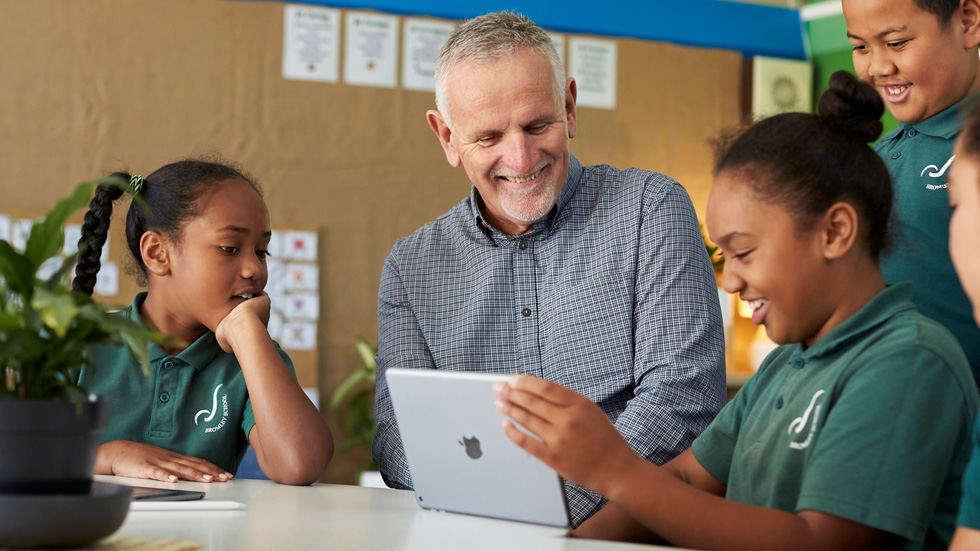
Students Azariah Abohay, Amelia Abohay, and Jeremiah Laufiso show Principal Scot Kinley their app prototype, built in Keynote, which allowed them to combine text, drawings, audio recordings, animations and hyperlinks.
“Tālofa lava, e te tautala Gagana Sāmoa?” (“Hello, do you speak Samoan?”)
When their much-loved Samoan language teacher moved to a local high school, many of Bromley’s Samoan students wanted to continue to learn Gagana Sāmoa — the language of the Samoan Islands — but no replacement teachers were available.
“A lot of our students’ parents or grandparents are fluent in their home language, but some of our students just know the basics — I had the same experience growing up,” explains Mele Togiaso, a teacher at Bromley School. “I'm part Māori and part Samoan, and I’m only now learning my family languages as an adult, thanks to a passionate group of kids!”
A group of students from years 3 through 6 (ages 8 through 11) asked Togiaso to help them find a way to continue their lessons. Together, they formed an inquiry group — the Digi Navigators — and started exploring apps, books, and websites they thought might help. Unfortunately, nothing fit their needs. Some apps relied too heavily on text for younger learners, some didn’t provide audio to help with pronunciation or images to help with comprehension, and some didn’t include fun games to keep students engaged and on track. The Digi Navigators were undeterred.
Bromley’s Pasifika students turned to teacher Mele Togiaso to help them find a way to continue their Samoan lessons. Togiaso used Apple’s App Design Journal to help guide the group through the app development process. Togiaso checks on students Amelia Abohay and Jeremiah Laufiso’s progress. “Tātou a’oa’o Gagana Sāmoa!” (“Let’s learn Samoan!”)
“We decided to create a prototype for an app called Let’s Learn Samoan, because all of the kids at our school have access to iPad and we wanted it to be accessible to everyone,” says Jeremiah Laufiso, a year 5 student.
The Digi Navigators created their app prototype in Keynote, the powerful presentation tool that comes included with most Apple devices, because it allowed them to combine text, drawings, audio recordings, animations, and hyperlinks in one place — all essential elements of their dream app. Togiaso used the App Design Journal from the Everyone Can Code curriculum, available as a free download from Apple, to help guide the group through the app development process. “It’s super helpful,” Togiaso says. “I share the Journal with anyone that asks how we created our app, because it provides such an easy, step-by-step process to follow.”
Bromley School student Azariah Abohay uses Apple Pencil and the Adobe Photoshop Sketch app to create an original illustration of a fale (a traditional Samoan building) for the app.
The Bromley School students sketched illustrations with Apple Pencil, created animations in Keynote, and recorded voice overs using the iPad’s built-in microphone.
After brainstorming ideas and creating wireframes for their app, the students divided into content creation teams, sketching illustrations with Apple Pencil, creating animations in Keynote, and recording voice overs using the iPad’s built-in microphone.
Testing was also an important part of the process. “This is where we discovered bugs in our prototype, and got feedback on how we could improve our app,” says Amelia Abohay, a year 6 student. “A lot of different groups around our school helped by telling us what they liked and didn’t like, and giving us ideas for how we could make it even better.”
The Digi Navigators also met with a Gagana Sāmoa expert from their community. “This was really valuable because he gave us feedback on our pronunciation, and even more ideas about what we could include,” Amelia says.
“My mission is to inspire a new generation of Pacific nations and Māori leaders in the tech industry,” said Togiaso. “These groups are underrepresented in tech today, and we have so much to offer. I want our kids to see careers in tech as a genuine pathway in their future.” In September 2020, the Digi Navigators were invited to pitch their idea at an event designed to increase opportunities for the next generation of Pacific nations tech innovators. In front of an audience of 50 local tech experts, investors, and teachers, five Digi Navigators presented their business case, demonstrated the app prototype, and answered questions from the crowd. They also received feedback from a local angel investor that has promised to provide continued support and mentorship to grow their idea.
“It was really cool to be able to teach our friends to speak Samoan using an app that we designed ourselves,” says Leonie Bradbrook, a year 6 student. “I would love to create more apps and help my friends.”
Back in regular lessons and at home, the Digi Navigators’ teachers and parents have noticed the deeper connection the students have forged with their culture, and their improved sense of themselves as capable and confident creators.
“In Pacific cultures, we achieve together,” says Togiaso. “It’s not about any one individual’s success — nobody is left behind. This experience showed our students that it is not enough for a smaller team to excel. For everyone to achieve, they all had to collaborate and make sure everybody was doing well.
for test
for test for test
Use this text block to show store announcements, advertise products and collections, or simply welcome visitors to your store.
just do it

just do it
for test for test
Overline
Share information about your brand with your customers. Describe a product, make announcements, or welcome customers to your store.
Text
Text
Text

Pair text with an image to focus on your chosen product, collection, or blog post. Add details on availability, style, or even provide a review.




Overline
Describe the feature, service or product that this icon represents
Describe the feature, service or product that this icon represents
Describe the feature, service or product that this icon represents